What is a keyword ranking?
Keyword ranking is how and where your website is ranked in search engine for the chosen keyword. It’s also the major factor that determines how many traffic and leads you can get from Google’s (or any other) SERP. The better ranking you’ll have, the higher traffic you’ll get from the organic search.
According to various studies from 2013, the first SERP page gets 91% of the CTR from a particular search. The first position in SERP will give you 32.5% CTR, second position 17.6%, third position 11.4% and so on.
So let’s say, you’d like to improve your keyword ranking (because you’d like to get higher CTR) and see Google position for your keywords. How can you do that?
- Focus on relevant keywords.
- Use the SERP tool to track rankings of the right keywords.
- Use the Stairway Technique.
- Mix your relevant keywords with long-tail keywords.
- Organize your keywords in related groups for higher keyword ranking.
- Use Google keyword rank checker to track your organic movements.
Let’s break down all the points below.
1. Focus on relevant keywords
What are the relevant keywords in the meaning of keyword ranking (including mobile ranking)? Relevant keywords are that keywords and/or phrases that can bring you quality and targeted traffic to your website.
First of all, you should collect such keywords with any keyword research tools. Too often, people short-change keyword research (assuming they know what keywords their audience is using) or rely too heavily on free, third-party keyword suggestion tools. For example, you can use KWFinder, Keywordtool.io or even Google Keyword Planner! All of them can provide relevant keyword based on your core keywords and search suggestions.
Let’s say, you’d like to rank for “Google keyword rank checker”. Use any of the tools mentioned above and collect all the keywords related and relevant to this.
Using KWFinder...
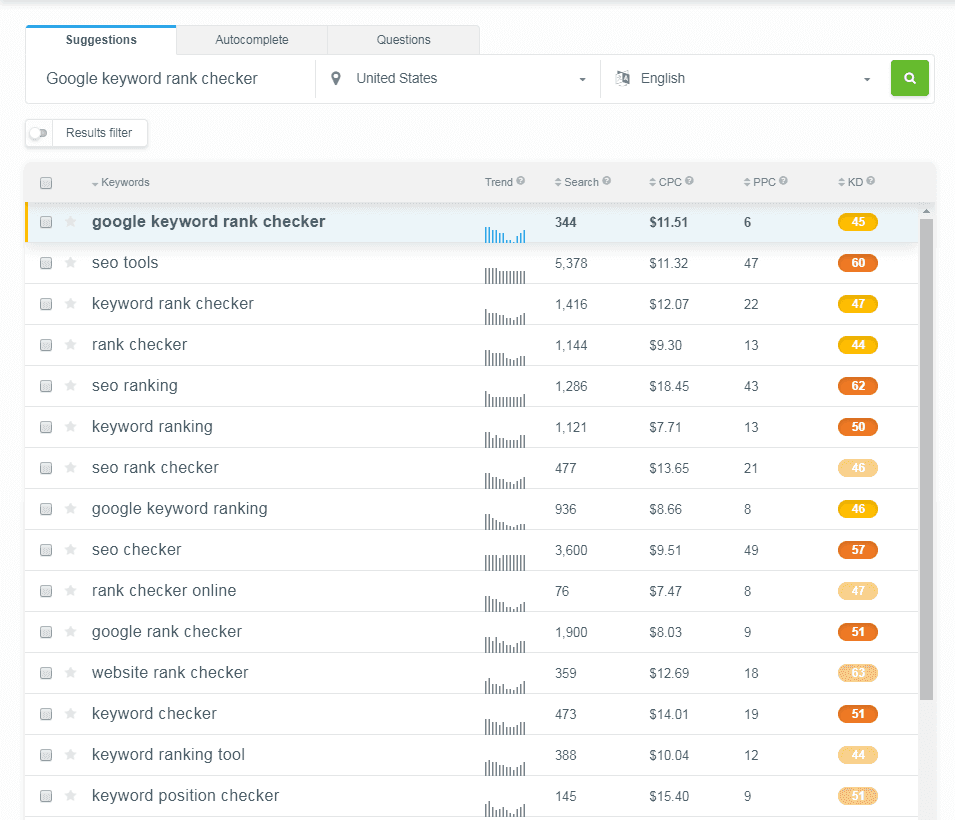
Ubersuggest...
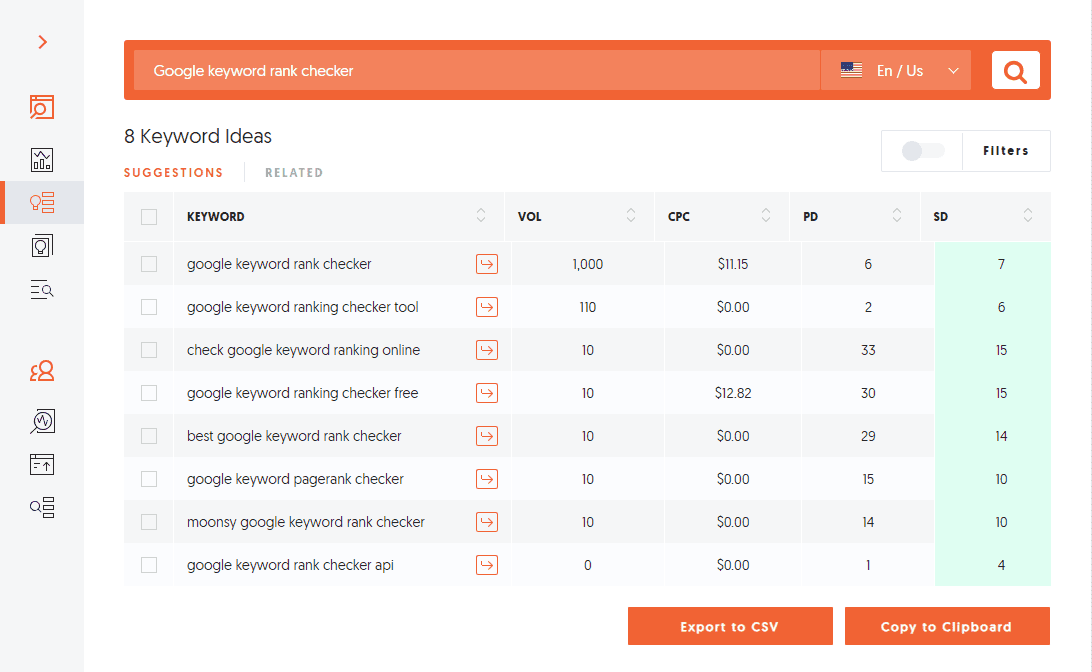
Or Ahrefs Keyword Explorer:
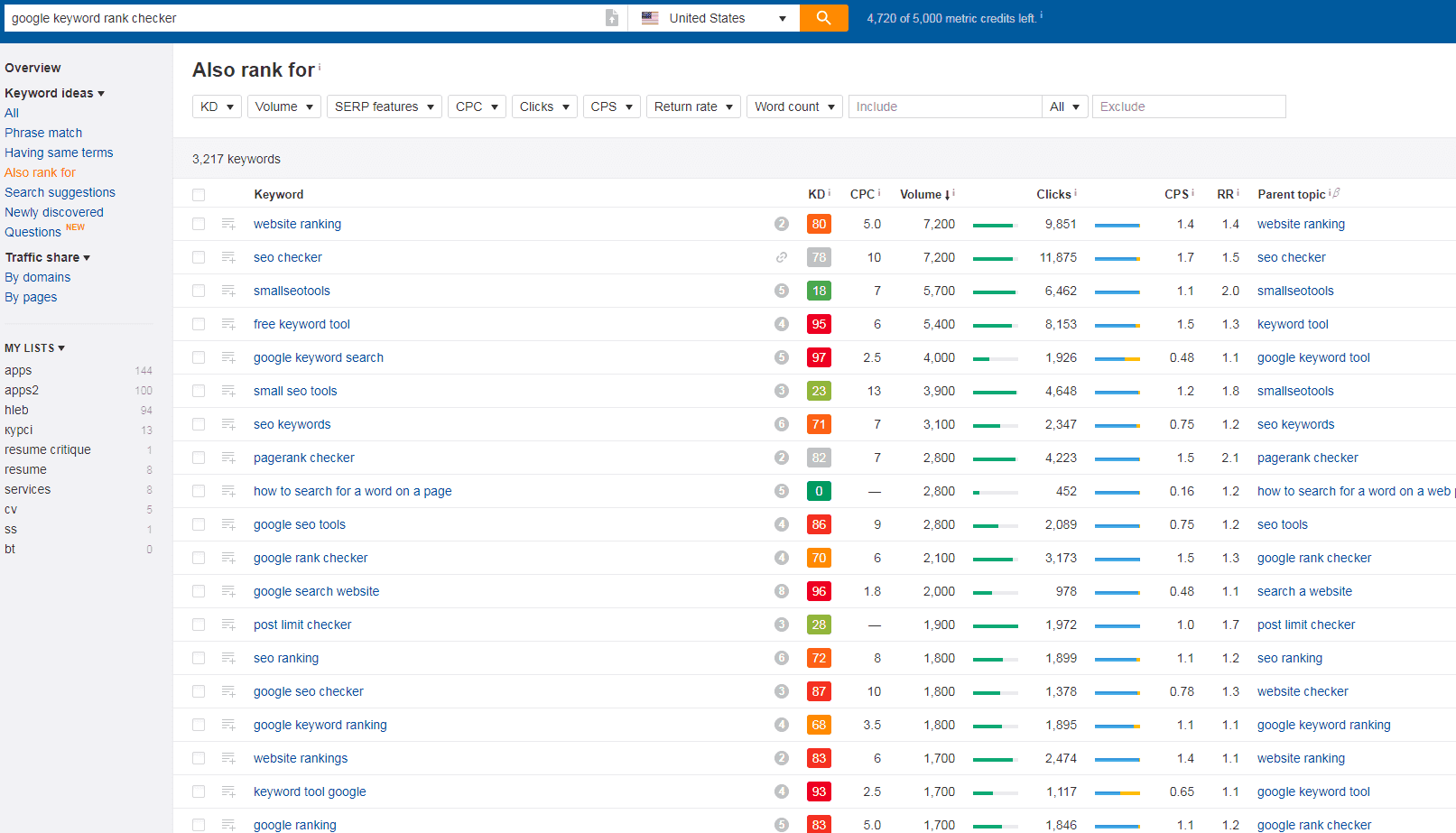
Remember that those chosen keywords should be relevant, accurate and extensive. Additionally, you can face some problems in these third-party tools, because they haven’t personalization. You can pick general, popular keywords shown to everyone, so you have no competitive edge, and no way of knowing how truly relevant they are to your business. That’s why we highly recommend you to use a few keyword tools.
2. Use SERP tool to track rankings of the right keywords
Now, you should check website keyword ranking using the best Google keyword rank checker. You can check out any of these SERP tools:
| RANK | NAME | PRICING | GOOGLE (+MOBILE) | BING | REPORTS | ADDITIONAL FEATURES |
1 | SpySERP | Free/$0.25 per 1000 checks | YES | YES | YES | YES |
2 | RankWatch | $29 | YES | YES | YES | YES |
3 | SerpFox | Free/$10 per month | YES | YES | YES | NO |
4 | MOZ Pro | $99 | YES | YES | YES | YES |
5 | SERPS | $49 | YES | YES | YES | YES |
6 | Ranktrackr | $9 | YES | NO | YES | YES |
7 | AlloRank | Free/$9 | YES | NO | NO | YES |
8 | Whatsmyserp | Free | YES | NO | YES | YES |
9 | SERPChecker | $29.90 | YES | NO | YES | YES |
10 | SEO Crawler | $29.95 | YES | YES | YES | YES |
Don’t forget to focus on the next key features in order to make the best decision:
- A number of keywords you can track.
- SERP tool accuracy.
- A number of search engines.
- Mobile SERP tracking.
- Affordable plans and prices.
3. Use the Stairway Technique
What is the “Stairway Technique”?
It’s a technique that helps you to rank higher for your keywords even if you have a brand-new website in the high-competitive niche.
Follow the next steps to use this technique:
Collect the relevant keywords and divide them into three categories
You need to know how many times per month users makes the search queries with your relevant keywords. All of them you can put on three categories: there are high-volume keywords, middle-volume keywords, and low-volume keywords.
Pay no attention to the third-party metrics like Keyword Difficulty because you don’t need to know the competition level in this case - only keywords volume. Why? Because even low-volume keywords may have a high competition level based on backlink metrics, domain metrics, and other third-party metrics, but it’s not your way now to check those metrics.
When your keyword list is derived from the actual keywords that real people have used to find your site, you can easily check how many times they do that. Plus, you'll know which keywords are driving the most traffic and conversions.
Focus on low-volume keywords until you get the first traffic
Do you have a brand-new website in the high-competitive niche? You don’t get higher ranking for high-volume keywords instantly. Your website weaker than your niche leaders, you have a lower budget, and people haven’t heard about you. That’s why you should try to rank for low-competition keywords. When you see that your website keyword ranking become better, you can follow the next steps.
Focus on middle and high-volume keywords
You got traffic and good rankings for the low-volume keywords. Now you can focus on middle-volume keywords and try to rank for high-volume keywords.
It looks like you’re moving on the stairway: your first step - keywords with low volume, the next step is middle volume, and the last step is high-volume keywords.
4. Mix your relevant keywords with long-tail keywords
Long-tail keywords are longer, less common keywords that offer a couple of advantages for webmasters and SEO professionals:
- They have lower competition: there are a bit of webmasters are trying to rank for long-tail keyword phrases, so your site has a better chance of achieving high rankings.
- Long-tail keywords more targeted: Longer keywords show more intent—they reveal more about what the searcher is looking for, so you can better serve them with a specific offering or specific Web content.
We recommend you to mix all of your keywords with long-tail keywords, regardless of their search volume. For this reason, you can use LSIGraph which provides a lot of long tails for your keywords.
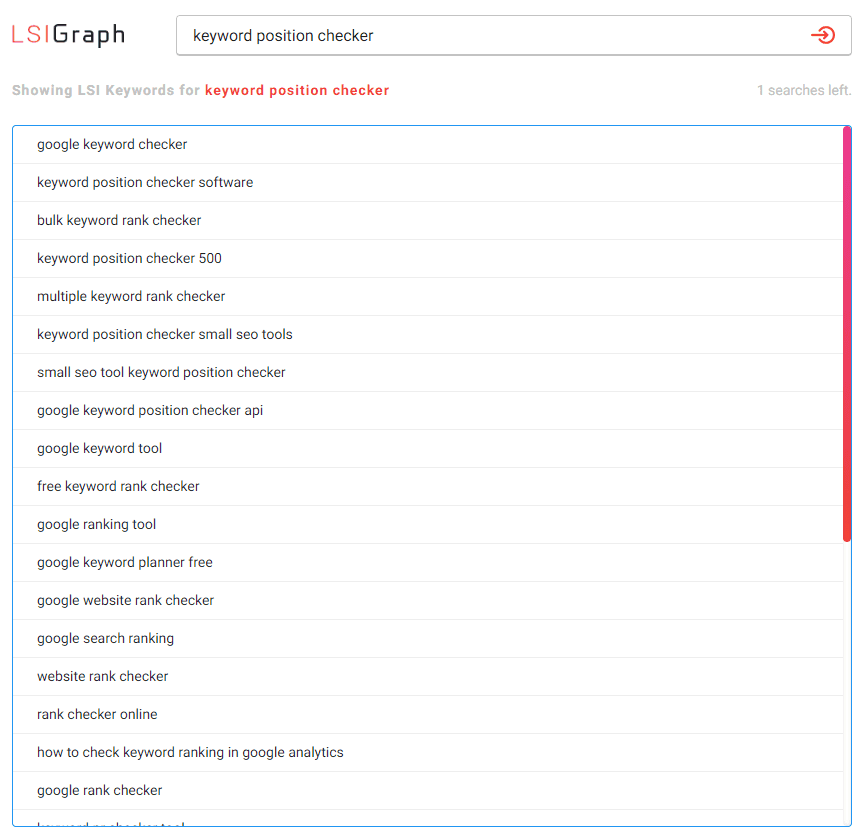
Additionally, you can find a lot of long-tail keywords from the “Also search for” or “People also ask” boxes in the Google SERP:
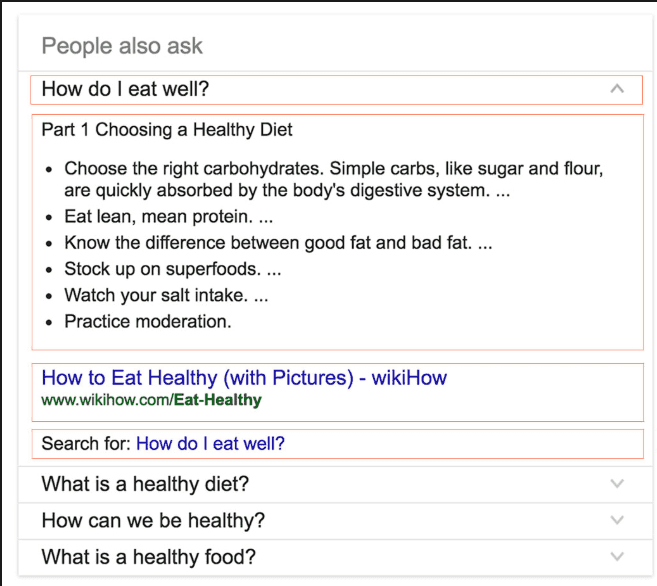
5. Organize your keywords in related groups for higher keyword ranking
SpySERP's most powerful feature is its suite of keyword grouping (clustering) tools. Effectively grouping your keywords makes a huge difference when it comes to improving your keyword rankings. This is because tightly related keyword groups enable more strategic search marketing initiatives.
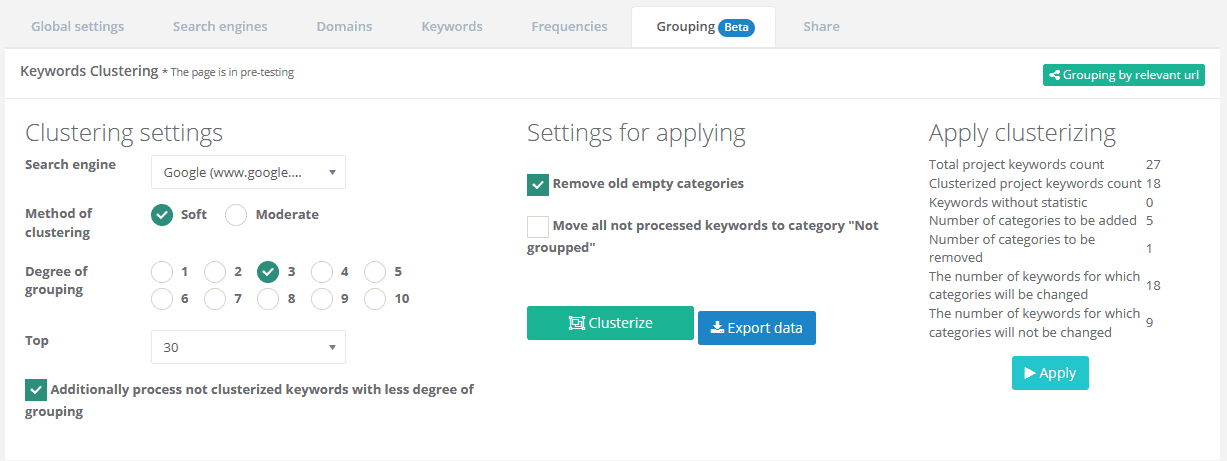
Creating keyword groups in SpySERP is highly efficient because the software automatically suggests groupings based on relevance.
6. Use Google keyword rank checker to track your organic movements
Now you have groups of relevant and volume-targeted keywords with additional long-tail keywords. What you should do next? You should track your keywords and its Google position using the Google positions checker.
SpySERP is such Google SERP checker that monitors and reviews website positions, as well as provides for the clients' 24h website’s position monitoring in Google, Yandex, Yahoo, Bing, and other search engines.
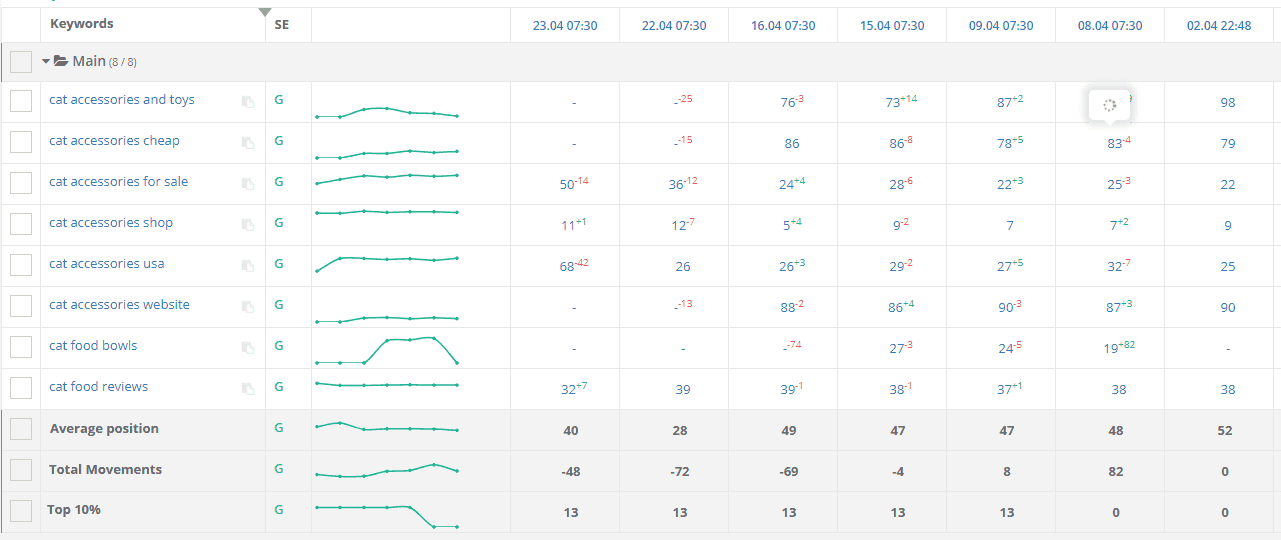
Additionally, you can make SERP analysis based on the groups of your ranking keywords:
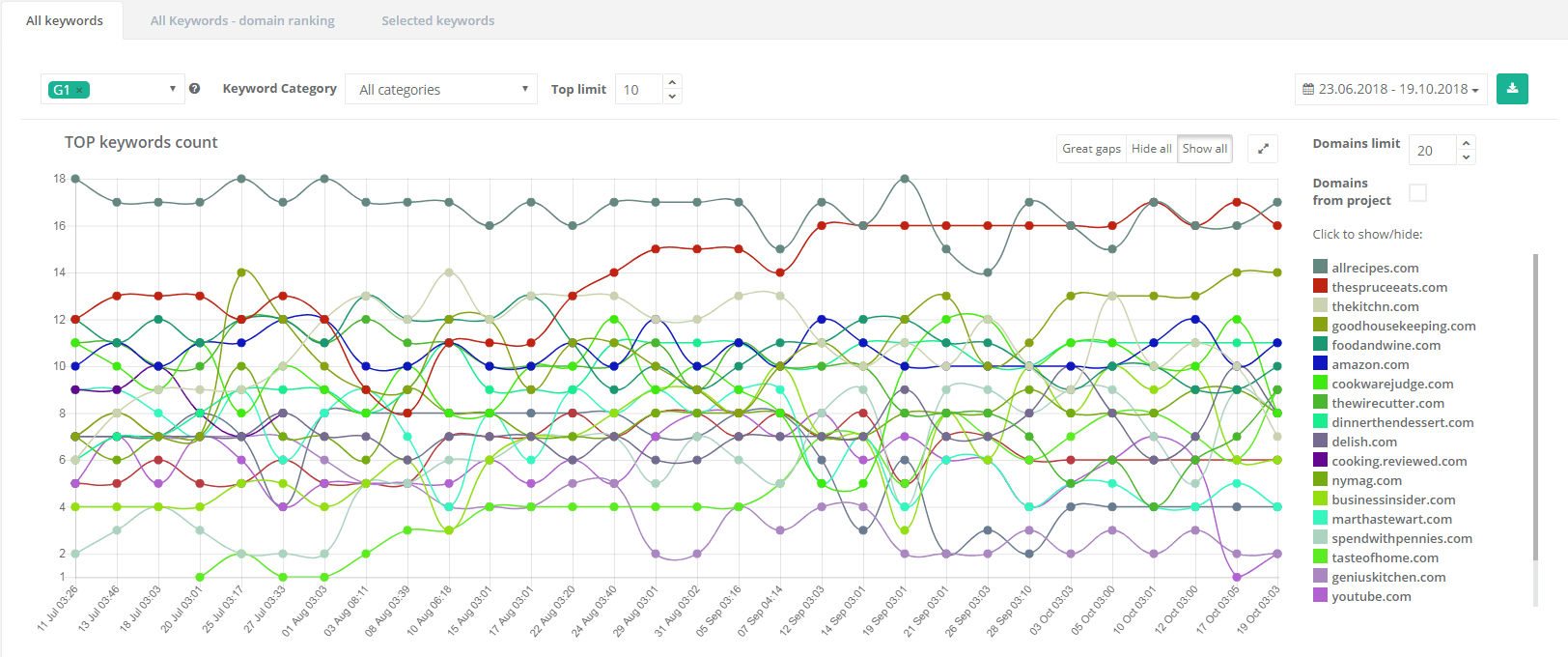
In conclusion we can said that optimizing keywords is probably the most important SEO technique that you need to apply and watch out. Sometimes it can be very difficult for website owners who are not very familiar with the SEO process. Developing content and link building strategies that grow your audience, build your brand, and increase your SEO and revenue is crucial for your business. Some special services like OutreachMama have the latest info and strategies on how to do this.
That’s all! If you’d like this article, feel free to share it and ask us any questions about SERP tools, keyword position check or any other related issues!





